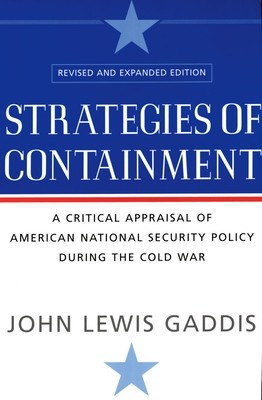
- We will send in 10–14 business days.
- Author: John Lewis Gaddis
- Publisher: Oxford University Press, USA
- ISBN-10: 019517447X
- ISBN-13: 9780195174472
- Format: 13.5 x 20.3 x 3.1 cm, minkšti viršeliai
- Language: English
- SAVE -10% with code: EXTRA
Reviews
Description
When Strategies of Containment was first published, the Soviet Union was still a superpower, Ronald Reagan was president of the United States, and the Berlin Wall was still standing. This updated edition of Gaddis' classic carries the history of containment through the end of the Cold War. Beginning with Franklin D. Roosevelt's postwar plans, Gaddis provides a thorough critical analysis of George F. Kennan's original strategy of containment, NSC-68, The Eisenhower-Dulles "New Look," the Kennedy-Johnson "flexible response" strategy, the Nixon-Kissinger strategy of detente, and now a comprehensive assessment of how Reagan - and Gorbechev - completed the process of containment, thereby bringing the Cold War to an end.
He concludes, provocatively, that Reagan more effectively than any other Cold War president drew upon the strengths of both approaches while avoiding their weaknesses. A must-read for anyone interested in Cold War history, grand strategy, and the origins of the post-Cold War world.EXTRA 10 % discount with code: EXTRA
The promotion ends in 23d.13:33:02
The discount code is valid when purchasing from 10 €. Discounts do not stack.
- Author: John Lewis Gaddis
- Publisher: Oxford University Press, USA
- ISBN-10: 019517447X
- ISBN-13: 9780195174472
- Format: 13.5 x 20.3 x 3.1 cm, minkšti viršeliai
- Language: English English
When Strategies of Containment was first published, the Soviet Union was still a superpower, Ronald Reagan was president of the United States, and the Berlin Wall was still standing. This updated edition of Gaddis' classic carries the history of containment through the end of the Cold War. Beginning with Franklin D. Roosevelt's postwar plans, Gaddis provides a thorough critical analysis of George F. Kennan's original strategy of containment, NSC-68, The Eisenhower-Dulles "New Look," the Kennedy-Johnson "flexible response" strategy, the Nixon-Kissinger strategy of detente, and now a comprehensive assessment of how Reagan - and Gorbechev - completed the process of containment, thereby bringing the Cold War to an end.
He concludes, provocatively, that Reagan more effectively than any other Cold War president drew upon the strengths of both approaches while avoiding their weaknesses. A must-read for anyone interested in Cold War history, grand strategy, and the origins of the post-Cold War world.

Reviews